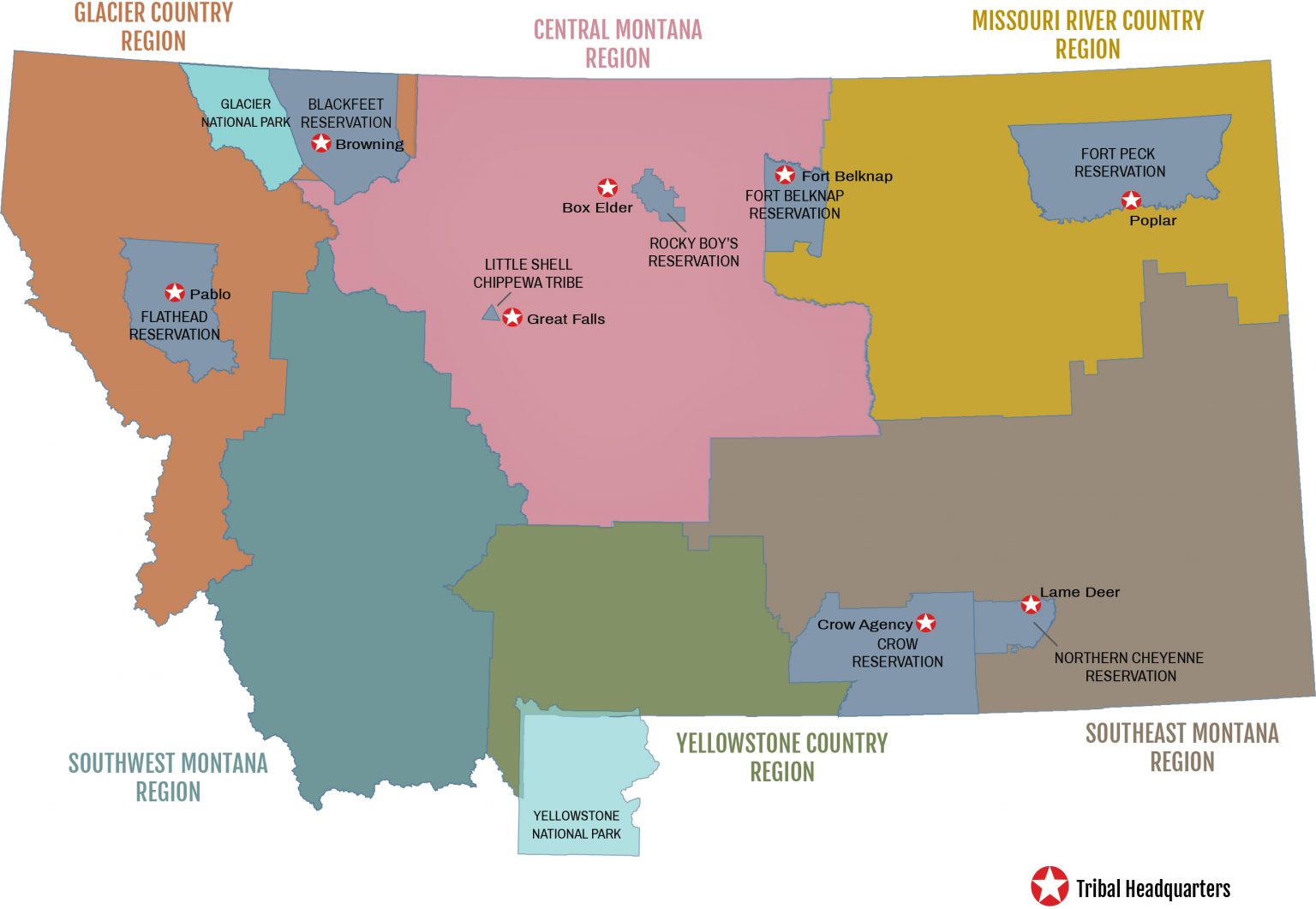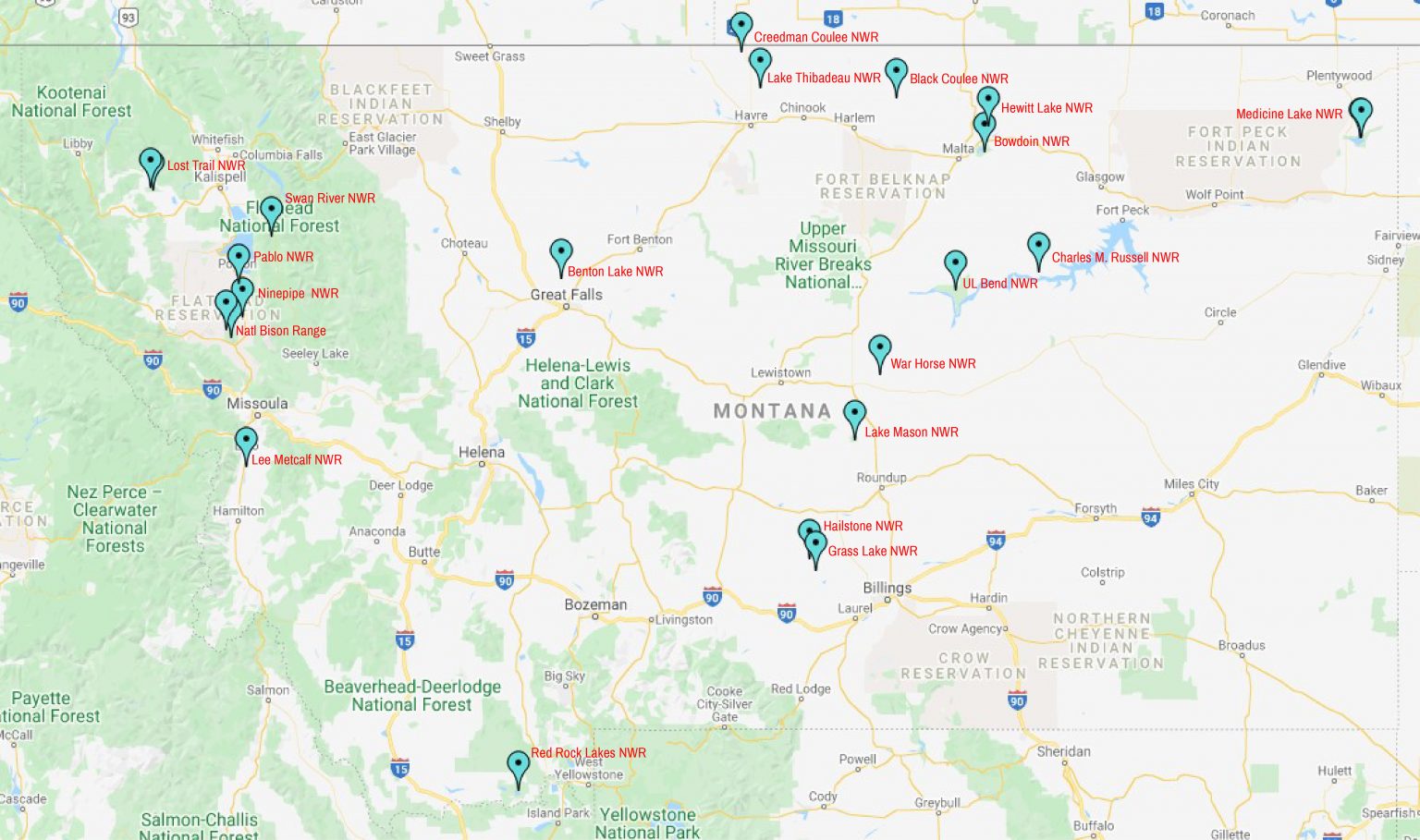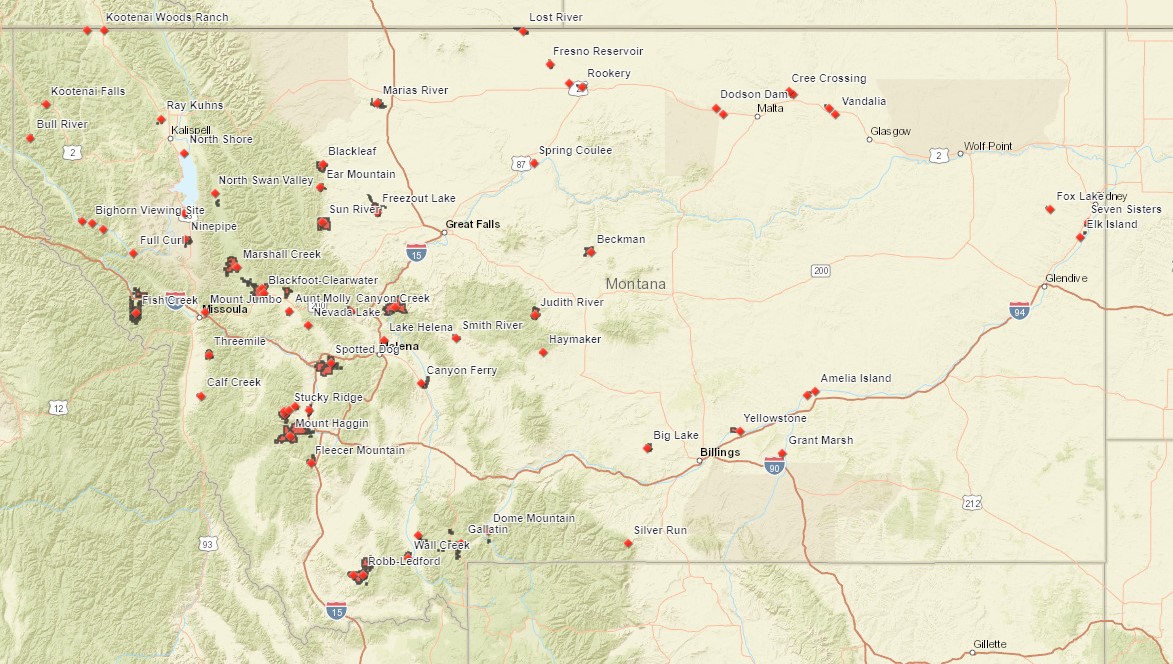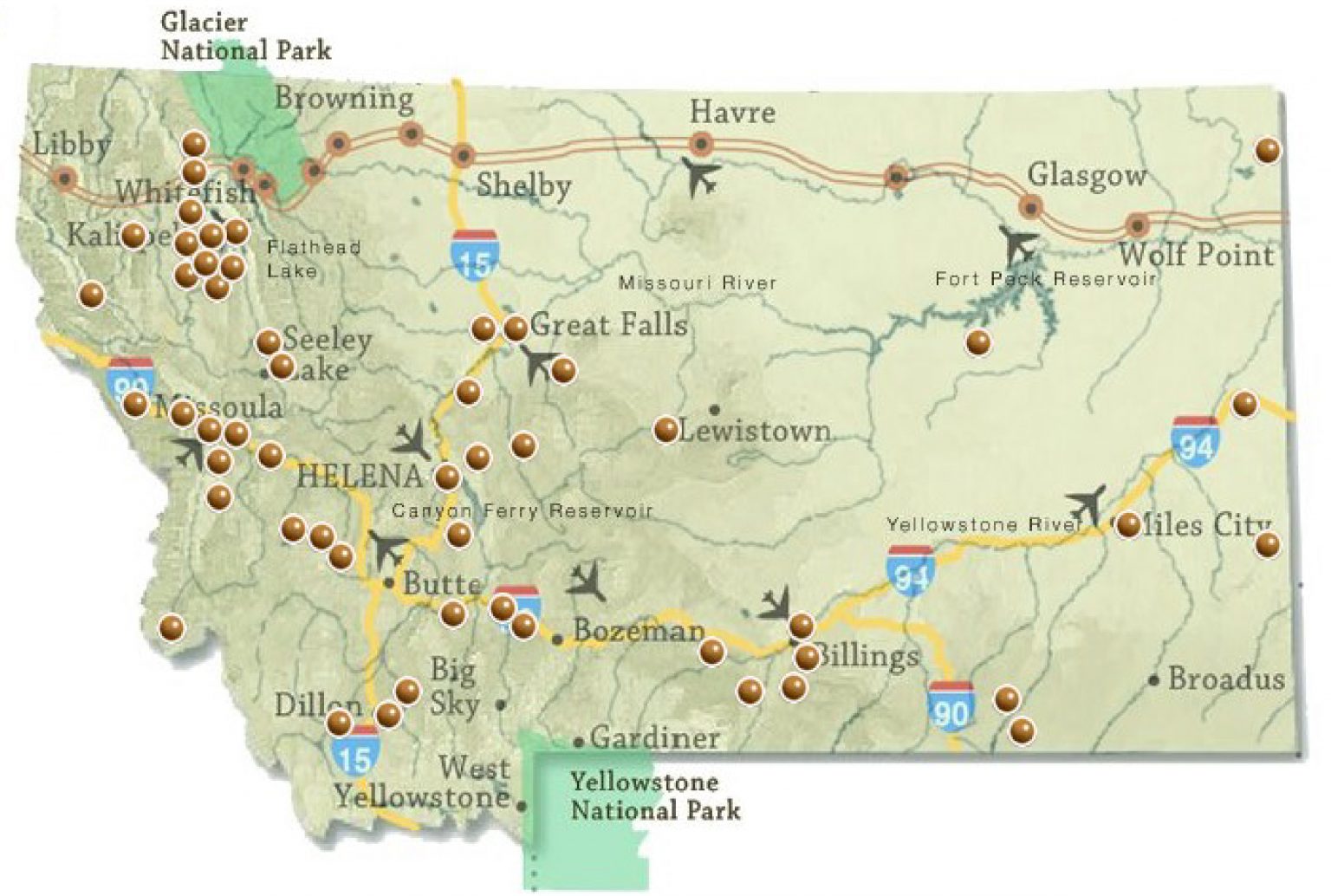Permits
Montana does not have an overall state permit process. Permitting is dependent upon where you are shooting.
Public lands have long served as a top location choice for the film industry, and many of Montana’s most iconic locations are on public land. Two state and six federal agencies manage over 31 million acres, about 35% of Montana’s total land area.
When filming on private land, you should obtain a private land owners’ agreement. Also be aware that there may be cases where private land intermingles with public lands.
Filming on lands managed by the categories and agencies below will require a film permit. Some agencies manage more than one category. Contact the Film Office for assistance.
Currently, the only cities in Montana with mandatory film permit requirements are Bozeman and Livingston. Permits are required before using any municipal buildings, streets or public parks as a film location.
However, other cities are working on requiring film permits as well, like Butte and Missoula. So, no matter what city or town you plan to film in, you should check with local governments and inquire about permitting and inform them of your plans to shoot.
Visit the cities jurisdictions database for the city or town in which you are interested to learn more about permitting requirements and who to contact.
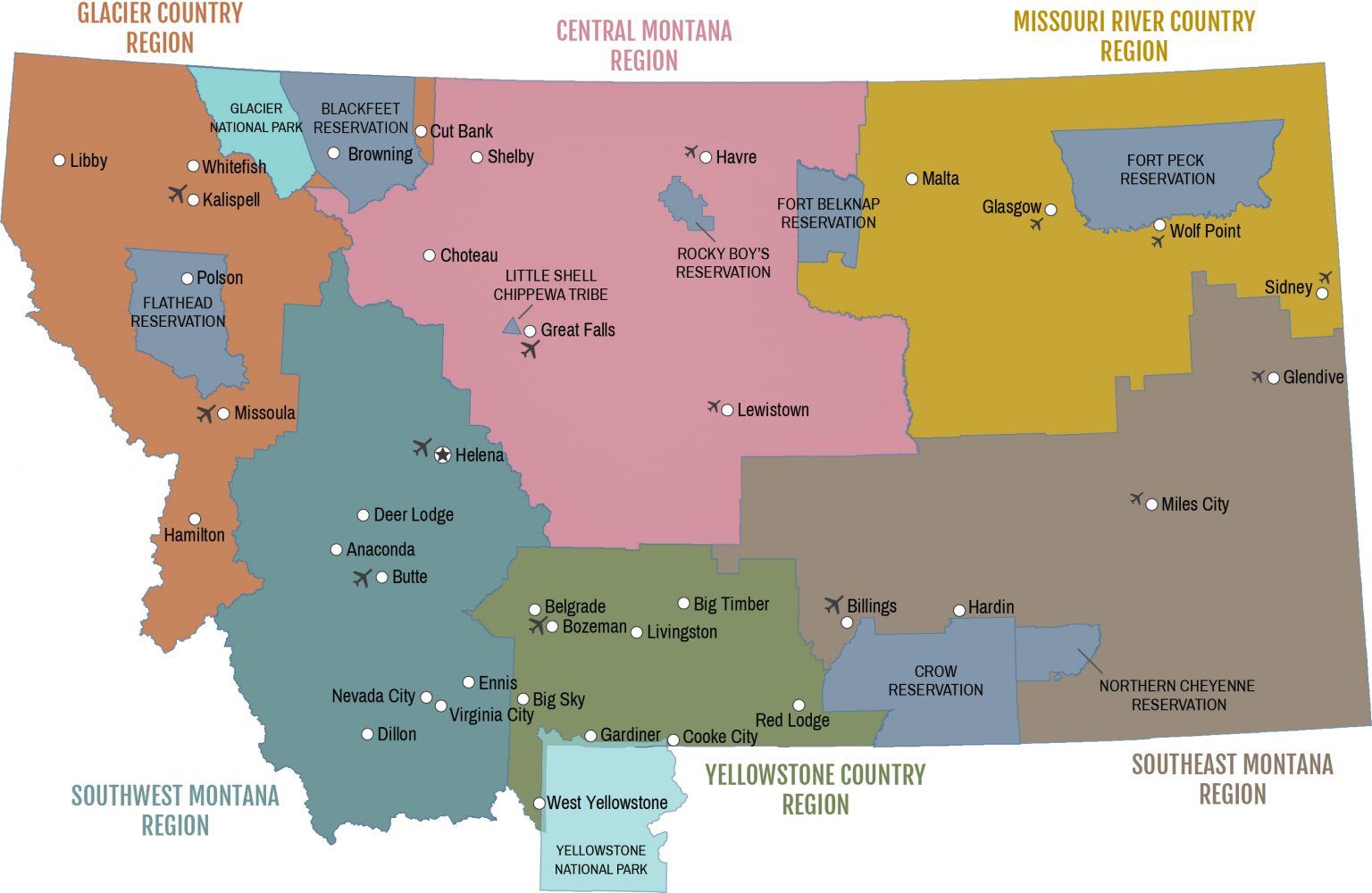
The Indian Nations in Montana are rich strongholds of Native American heritage. With seven reservations representing 12 tribes, 9% of land in Montana is tribal land. Many productions – including feature films, commercials, documentaries and stills – have found their ultimate location on Montana reservation land.
Permit procedures vary from tribe to tribe, and you must gain permission from the appropriate tribal council by scheduling a meeting with them. Cultural consideration must be adhered to on sovereign nation land. Access contacts and any permitting requirements per tribe via the Indian nations jurisdictions database.
The Montana Department of Transportation allows filming, with permission, on its state highways, and in some cases, the interstate system. State highways include primary, secondary and urban routes. Intermittent traffic control is permitted. In most instances, a written traffic control plan will be required. A licensed and bonded company must be used for traffic control, for the safety of the film crew as well as the public. Alternately, in some instances it may be possible to use State Highway patrolmen for traffic control, depending on circumstances.
Some situations may also require a special events permit. The district administrator will make these determinations based on location and related issues. Filming is normally allowed on city and county roads. Permission must be requested in advance from, and is at the discretion of, the appropriate municipality or county commission. There is no fee for shooting on a state highway. Liability insurance is required in the amount of at least $1 million. Insurance above this level is also accepted.
Before any filming begins on or next to the highway, the appropriate district administrator must be contacted at least 15 days in advance. The district will then provide the appropriate permit information based upon the proposed activity. Visit the MDT jurisdictions database for contacts in each of these districts.
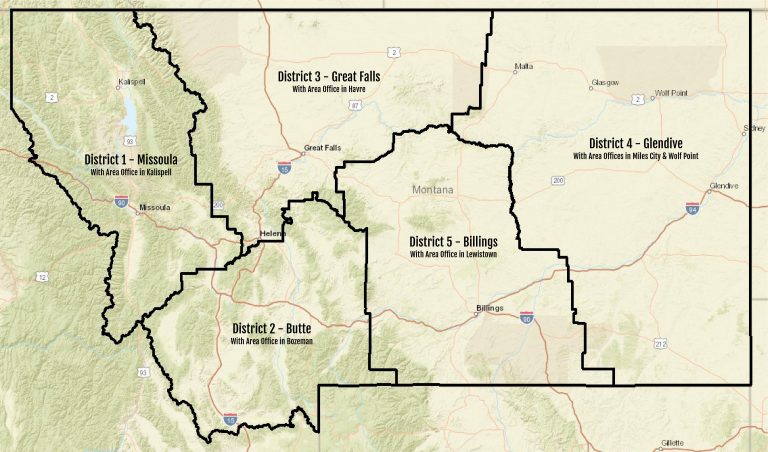
Dams, Fishing Access Sites, Lakes, Reservoirs and Rivers
The Montana/Dakotas BLM manages 60,000 acres of lakes and reservoirs; 2,500 miles of streams, boat launches and fishing access sites; and the Upper Missouri National Wild and Scenic River. The majority of the recreation areas on the map below are also access points to rivers and streams. To learn more about these areas, visit the BLM Montana/Dakota website.
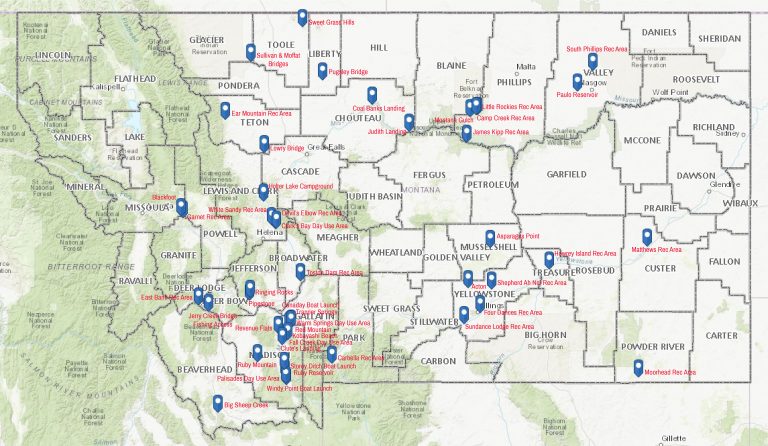
Commercial filming or still photography will not be permitted if it is determined that:
- There is likelihood of resource damage that cannot be mitigated.
- There would be an unreasonable disruption of the public’s use and enjoyment of the site, beyond short-term interruption.
- The activity poses health or safety risks to the public that cannot be mitigated.
Depending on location, time of production and type of production, the BLM may impose additional requirements such as bonding, reimbursement for overtime costs, etc. Note that large productions and requests to film outside popular locations usually require an onsite pre-application conference with BLM personnel. Although it may vary, the time to process is usually at least 30-60 days.
Each BLM regional office authorizes filming on public lands within their jurisdiction, and each location is unique and subject to different conditions. The permitting process and items needed vary depending on the proposed location and type of filming. Contact the BLM field office of the area you are interested in well in advance.
Visit the BLM jurisdictions database for contacts in these areas. To view land managed by the BLM in Montana in more detail, click the BLM-managed land map button.
The permitting process and items needed vary depending on the proposed location and type of filming. Review and download these important documents pertaining to filming on BLM land.
The Bureau of Reclamation manages approximately 200,000 acres of land and 100,000 acres of water surface in Montana, including 15 major water projects with six reservoir recreation sites with several boat ramps and 25 dams. Find more detail on these areas below.
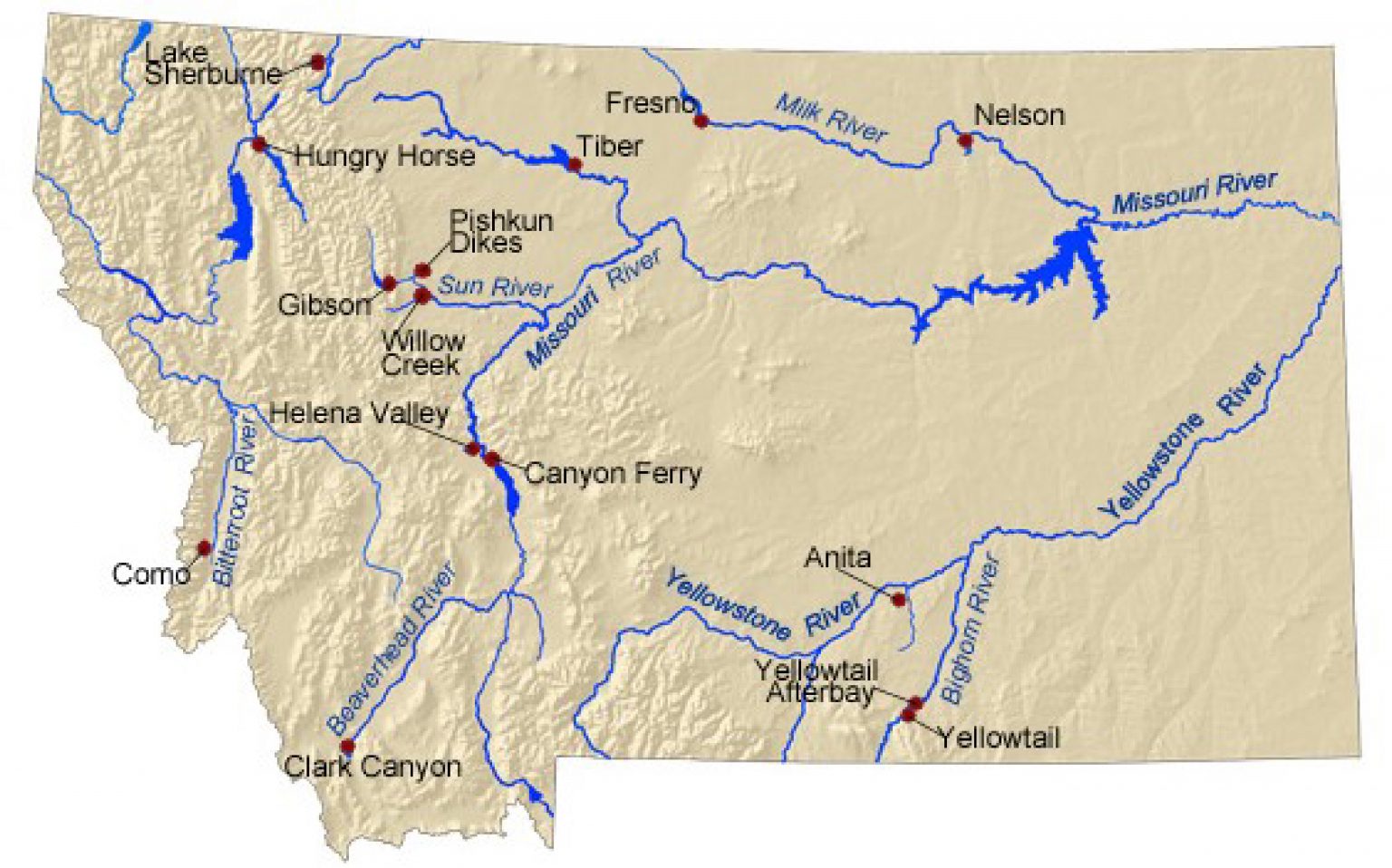
A permit is required for commercial filming on BOR lands or facilities. Commercial filming, whether performed by nonprofit organizations or private industry, includes but is not limited to motion picture filming, videography, virtual reality recording and sound recording. For ground photography, a permit is required if the requested activity will take place at locations where or when members of the public are generally not allowed; involves product or service advertisement; or involves the use of models, sets or props.
Filming and photography are prohibited if there is a likelihood of resource damage, there would be an unreasonable disruption of the public’s use and enjoyment of the site or the activity poses health or safety risks to the public.
All film permit applications must be received a minimum of 15 business days prior to the shoot date, but it is recommended that you submit your application at least 30 business days in advance.
To view all commercial filming and photography rules, permitting and FAQs, click on the BOR filming and photography info and BOR application steps buttons. To view regional contact information, visit the BOR jurisdictions database.
Montana FWP manages over 330 fishing access sites across the state. For more details on these sites, download the fishing access sites guide or use FWP’s interactive fishing access map.
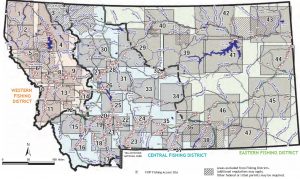
FWP allows and encourages commercial filming when and where possible. However, it also requires that primary consideration be given to potential resource damage and to anticipated disruption of normal public use. A permit is required when productions are made up of two or more individual photographers, videographers, models, crew members or client representatives for any filming or photography intended for public viewing or commercial advertising. If a photographer or videographer operates their own equipment without the use of models, props, crew members or client representatives, no permit is needed.
A minimum of 10 working days' advance notice is required to process requests and to determine feasibility. Depending on the location, an environmental assessment may also be necessary. Permits are granted on a case-by-case basis. Initial contact should include the nature of the project, shooting dates and times, the type of equipment and the number of vehicles. For best results, notify the appropriate regional parks manager as soon as you think you may want to shoot in the area even if you do not have complete information. A fee, performance bond and liability insurance may be required. The amounts for each will be set by the department on a case-by-case basis.
View the map below for FWP regional offices contacts or the FWP jurisdictions database.
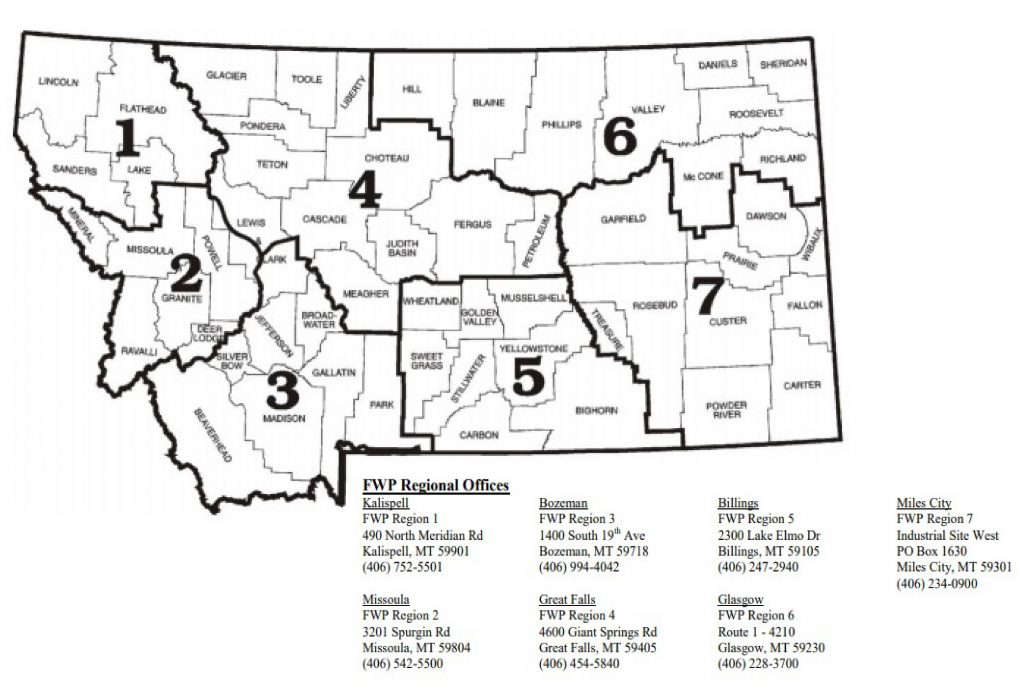
Review and download these important documents you may need to film on lands managed by FWP.
Guide for filming in Montana state parks
The U.S. Army Corps of Engineers manages the Fort Peck Dam in Montana, the first dam built in the upper Missouri River Basin. Find detailed information on Fort Peck Dam and the USACE’s permitting process below.
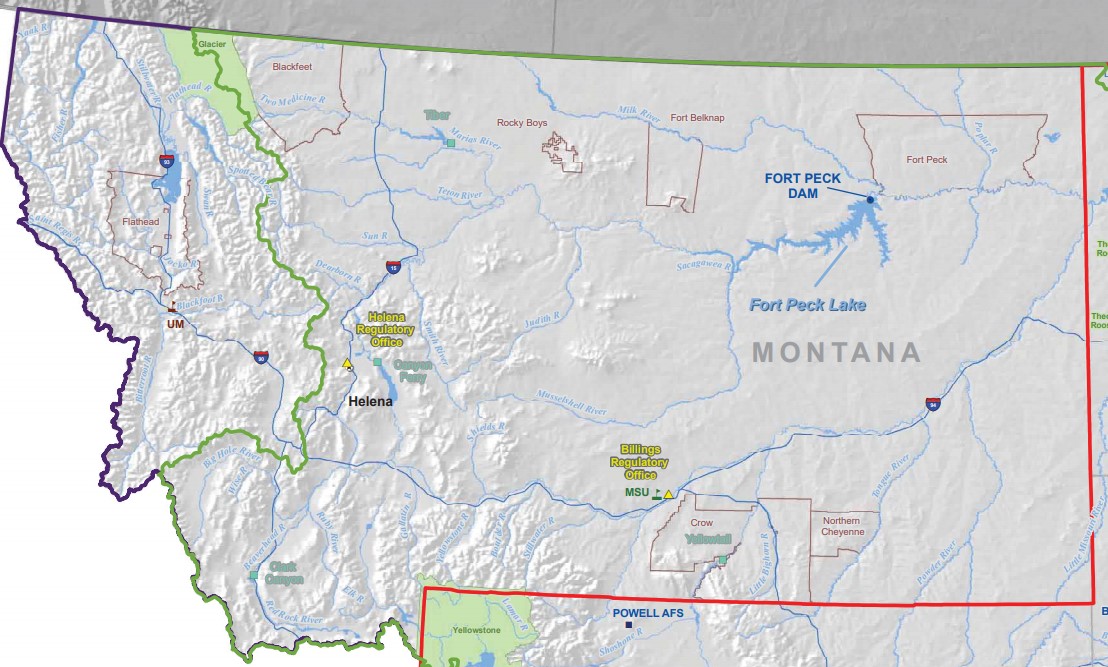
The U.S Army Corps of Engineers is tasked with ensuring that the physical, biological and chemical quality of our nation’s water is protected from irresponsible and unregulated discharges of dredged or fill material that could permanently alter or destroy these valuable resources. Individual permit requirements will be reviewed. By discussing all information prior to application submittal, your application will be processed more efficiently. An official determination as to the need for a Department of the Army permit will be provided upon request.
To inquire about filming at Fort Peck Dam, contact the USACE office at 406-526-3493 or visit USACE Montana district offices or USACE jurisdictions database.
Forests and Wilderness Areas
The Montana/Dakotas BLM manages 60,000 acres of lakes and reservoirs; 2,500 miles of streams, boat launches and fishing access sites; and the Upper Missouri National Wild and Scenic River. The majority of the recreation areas on the map below are also access points to rivers and streams. To learn more about these areas, click the BLM Montana/Dakota website button below.

Commercial filming or still photography will not be permitted if it is determined that:
- There is likelihood of resource damage that cannot be mitigated.
- There would be an unreasonable disruption of the public’s use and enjoyment of the site, beyond short-term interruption.
- The activity poses health or safety risks to the public that cannot be mitigated.
Depending on location, time of production and type of production, the BLM may impose additional requirements such as bonding, reimbursement for overtime costs, etc. Note that large productions and requests to film outside popular locations usually require an onsite pre-application conference with BLM personnel. Although it may vary, the time to process is usually at least 30-60 days.
Each BLM regional office authorizes filming on public lands within their jurisdiction, and each location is unique and subject to different conditions. The permitting process and items needed vary depending on the proposed location and type of filming. Contact the BLM field office of the area you are interested well in advance.
Visit the BLM jurisdictions database for contacts in these areas. To view land managed by the BLM in Montana in more detail, click the BLM-managed land map button.
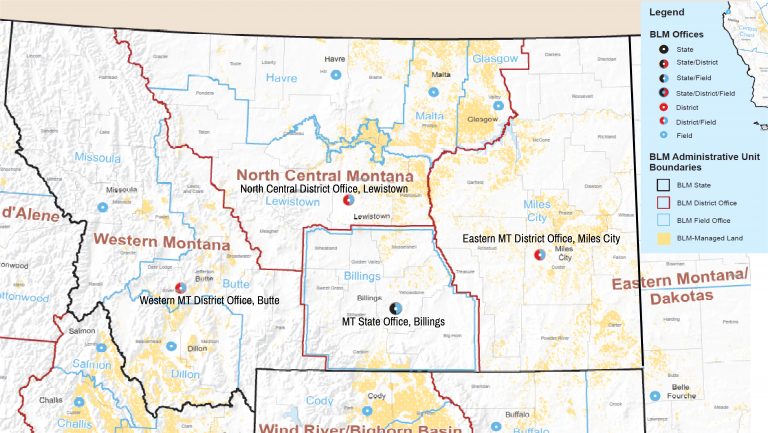
The permitting process and items needed vary depending on the proposed location and type of filming. Review and download these important documents pertaining to filming on BLM land.
The Montana DNRC, Trust Land Management Division is responsible for managing seven state forests: Clearwater, Coal Creek, Lincoln, Stillwater, Sula, Swan River and Thompson River. The boundaries of these forests can be confusing and are interspersed with private and federal ownerships, e.g. national forests. Visit the DNRC’s GIS interactive webmap to access public land and governing agency boundaries and much more.
To inquire about filming in these forests:
- Contact the DNRC’s regional land office responsible for that area. All seven forests are managed by two land offices: Northwestern and Southwestern land offices.
- Provide a legal description, e.g., township, range or section of the land you are interested in, along with proposed dates and other details of your film project.
- A land use license, fee and bond may be required.
Visit our DNRC jurisdictions database for contact information in these areas.
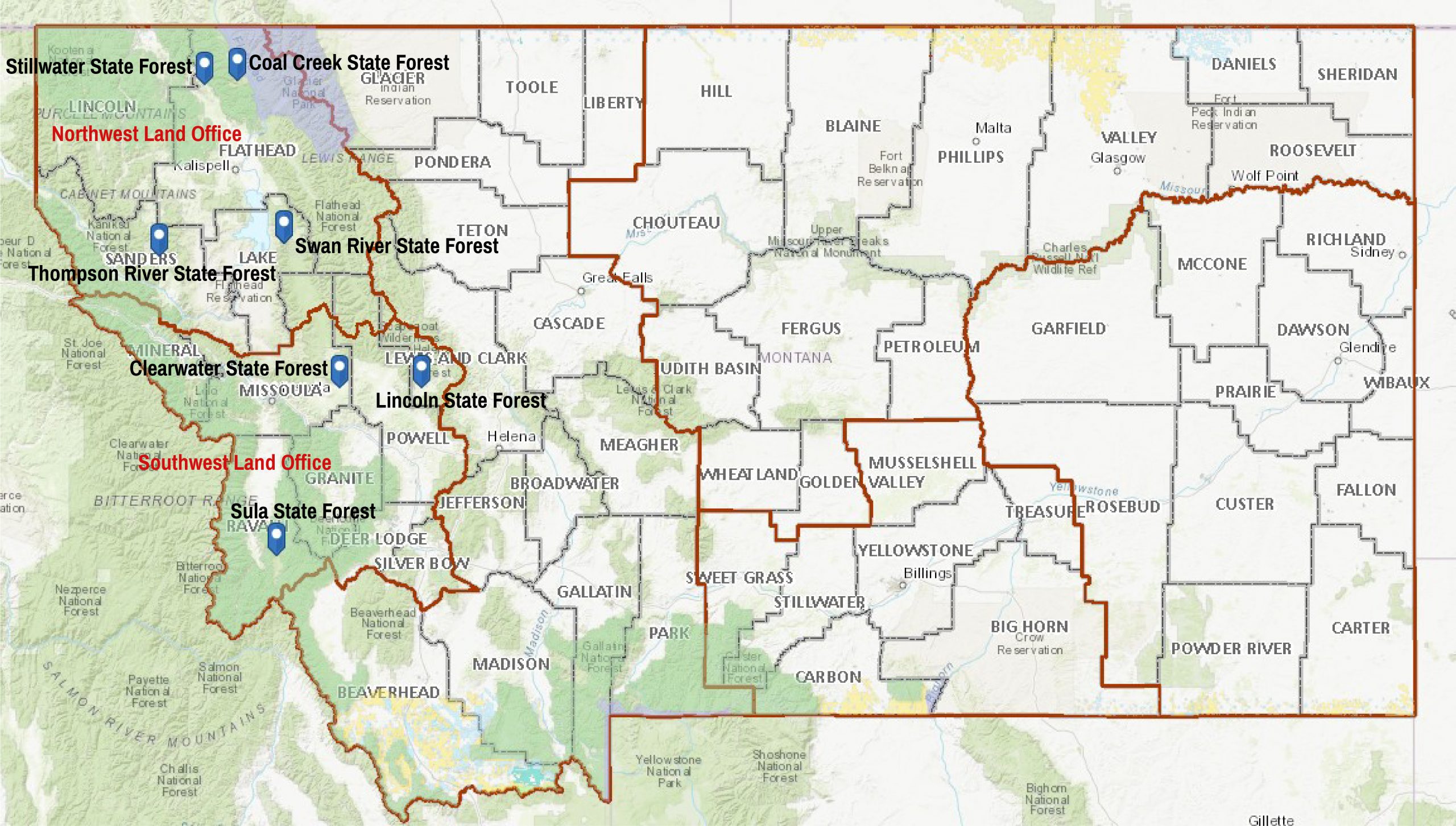
For 100 years, filmmakers have sought out Montana’s seven national forests to serve as a wild and scenic backdrop for film and television. The Northern Region of the U.S. Forest Service asks that anyone interested in producing a film to first contact the Forest Service at least two weeks in advance of the anticipated filming. Large-scale projects may require substantially more time for evaluation. Permits are generally not required for covering late breaking news, such as a wildfire or search and rescue operations. Commercial filming requires a special use permit, which is issued by the district ranger for the area the filming is planned to occur. You should:
- Determine what forest you’ll be filming in and contact that U.S. Forest Service office and request an application.
- Arrange a pre-application meeting at the local U.S. Forest Service office where the use is being requested. A staff member will discuss your proposal, potential land use conflicts, application procedures and qualifications, probable time frames, fees, bonding requirements, additional coordination with other agencies, environmental reports and field reviews.
- Complete and submit the application form, including supporting documents, to the local U.S. Forest Service office. An incomplete proposal could delay the processing.
- Note: most commercial uses require additional information with the application. You may need business plans, operating plans, liability insurance, licenses/registrations or other documents.
Visit our U.S. Forest Service jurisdictions database for contact in each of these forests.
U.S. Forest Service jurisdictions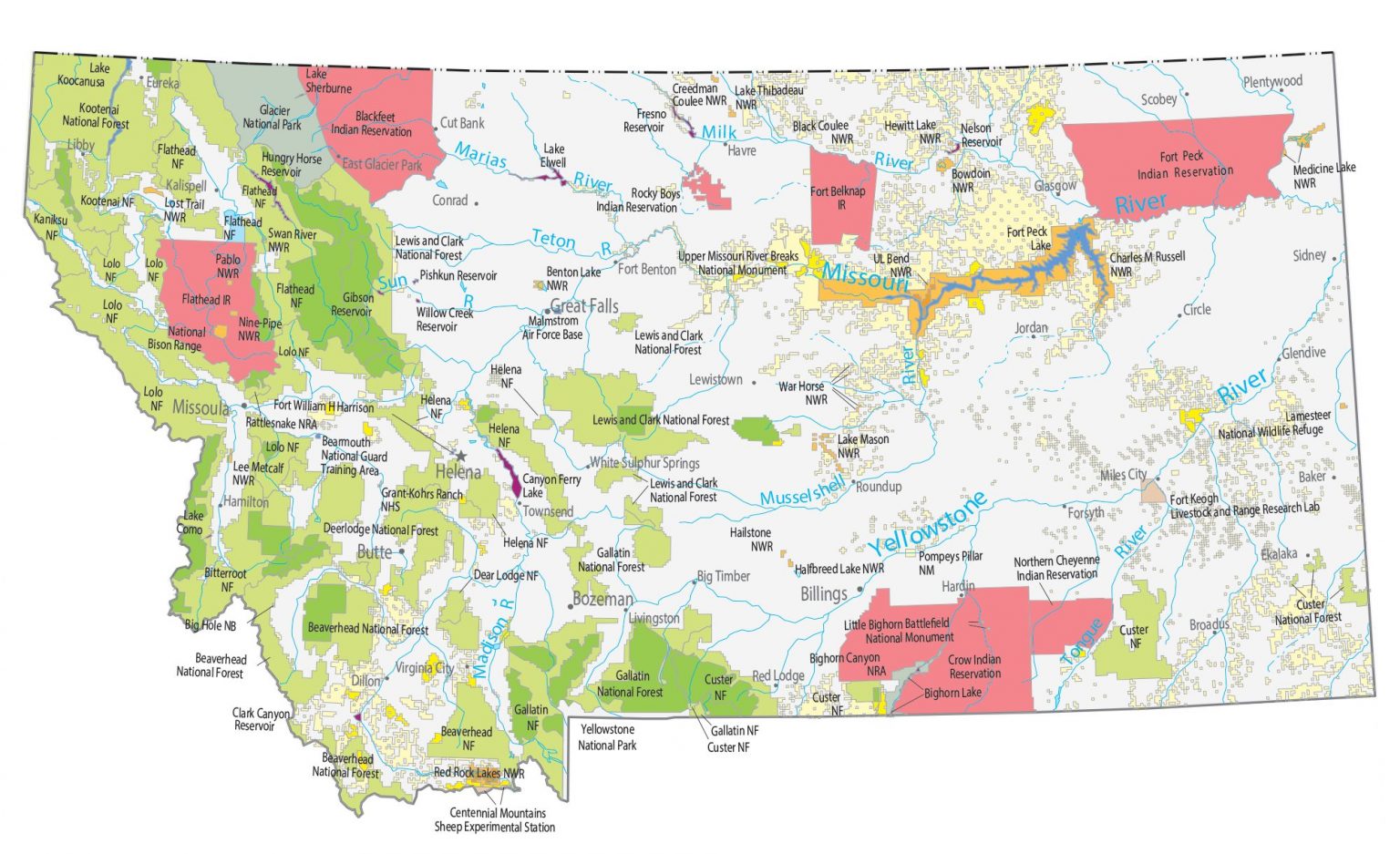
Review and download these important documents pertaining to filming in National Forests.
Guide to filming in national forests
National Battlefields, Historic Sites and Monuments
The Montana/Dakotas BLM manages two national monuments in Montana: Pompeys Pillar and the Upper Missouri River Breaks.
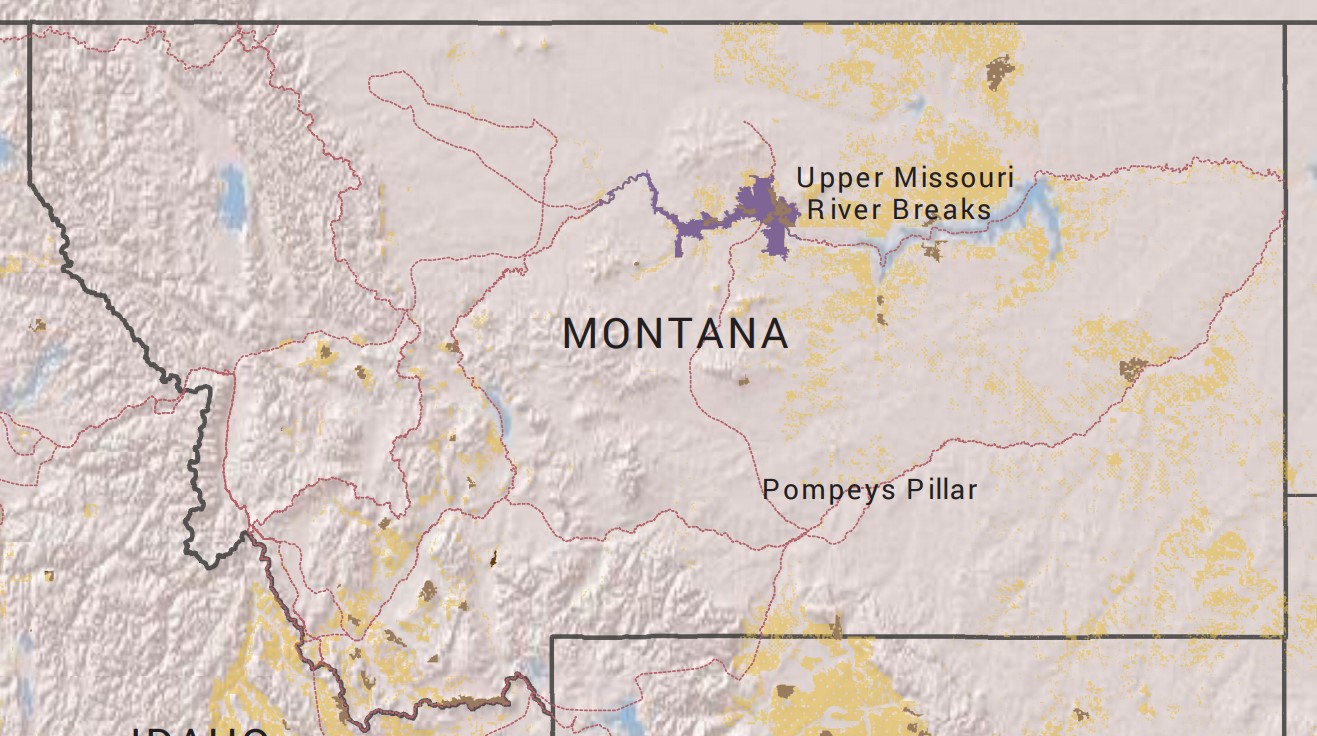
Commercial filming or still photography will not be permitted if it is determined that:
- There is likelihood of resource damage that cannot be mitigated.
- There would be an unreasonable disruption of the public’s use and enjoyment of the site, beyond short-term interruption.
- The activity poses health or safety risks to the public that cannot be mitigated.
Depending on location, time of production and type of production, the BLM may impose additional requirements such as bonding, reimbursement for overtime costs, etc. Note that large productions and requests to film outside popular locations usually require an onsite pre-application conference with BLM personnel. Although it may vary, the time to process is usually at least 30-60 days.
Each BLM regional office authorizes filming on public lands within their jurisdiction, and each location is unique and subject to different conditions. The permitting process and items needed vary depending on the proposed location and type of filming. To inquire about filming at these monuments, contact:
- Pompeys Pillar: BLM MT state office, 406-896-5004
- Upper Missouri River Breaks: BLM north central office, 406-538-1900
The National Park Service in Montana preserves some of the most treasured cultural resources in our state. Mapped below are Montana’s national battlefields, historic sites, monuments and our only national recreation area. To learn more about these areas, click on the NPS Montana button where you’ll find detailed information and contacts. Also visit our NPS jurisdictions database for contacts in these areas. Find permitting info below.
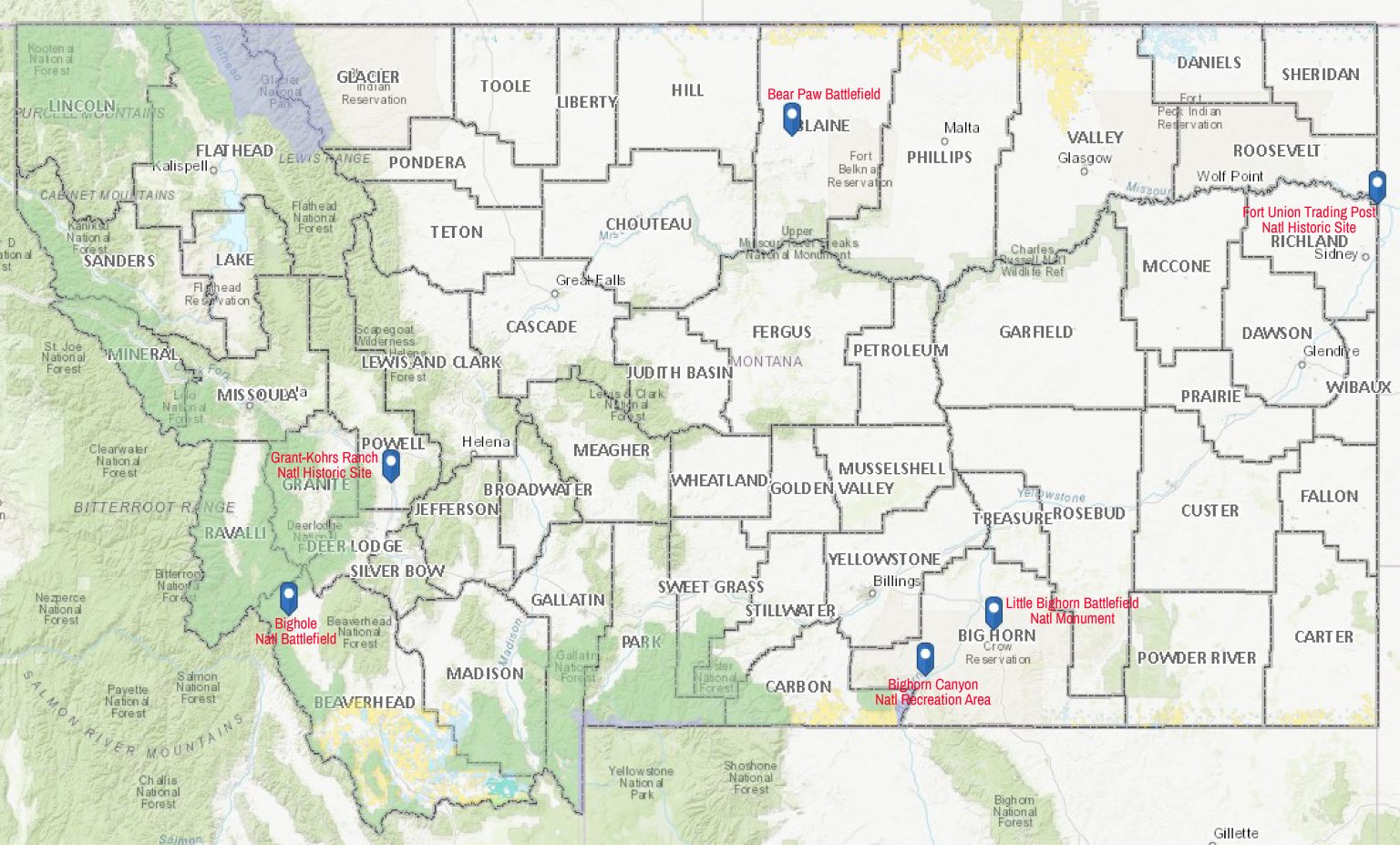
All commercial filming activities taking place within a unit of the national park system require a permit. Please visit the NPS permit info page for detailed, overall information on film permitting. Each site has their own permits, fees and processes. Access the site’s permitting requirements and applications with the buttons below.
In general, you should submit a completed application along with the application fee, which is different for each site and found on their page, to the site where you want to film or photograph as far in advance of your planned date as possible. A minimum of 30 days are required to process an application and issue a permit. For more complex permits, a minimum of 60 days will be required. In addition, you should request a meeting with park staff if your proposed activity is unusual or complex. Early consultation with park staff will help them process the submitted application in a timely manner.
National Wildlife Refuges and Wildlife Management Areas
Montana is in the Mountain-Prairie Region of the U.S. Fish and Wildlife Service. The work the FWS undertakes in our state includes ecological science and fish and wildlife conservation by managing 21 national wildlife refuges, including the National Bison Range. Click the map to learn more about these areas.
Also visit FWS Montana offices and contacts or the FWS jurisdictions database.
FWS Montana offices and contacts
The national wildlife refuge system has four different special use permit application forms to enable the public to engage in activities on a national wildlife refuge. Commercial filmmakers and photographers will need to apply for a permit using the commercial activities special use permit application. Read about FWS permitting requirements via the FWS permit info button below.
Montana FWP manages 68 wildlife areas in the state. For more details on these areas, access the FWP wildlife management areas map. Permitting information below.
FWP allows and encourages commercial filming when and where possible. However, it also requires that primary consideration be given to potential resource damage and to anticipated disruption of normal public use. A permit is required when productions are made up of two or more individual photographers, videographers, models, crew members or client representatives for any filming or photography intended for public viewing or commercial advertising. If a photographer or videographer operates their own equipment without the use of models, props, crew members or client representatives, no permit is needed.
A minimum of 10 working days' advance notice is required to process requests and to determine feasibility. Depending on the location, an environmental assessment may also be necessary. Permits are granted on a case-by-case basis. Initial contact should include the nature of the project, shooting dates and times, the type of equipment and the number of vehicles. For best results, notify the appropriate regional office as soon as you think you may want to shoot in the area even if you do not have complete information. A fee, performance bond and liability insurance may be required. The amounts for each will be set by the department on a case-by-case basis.
Determine which FWP regional office the wildlife management area is in and contact that office for permitting requirements. Also find contact information in the FWP jurisdictions database.
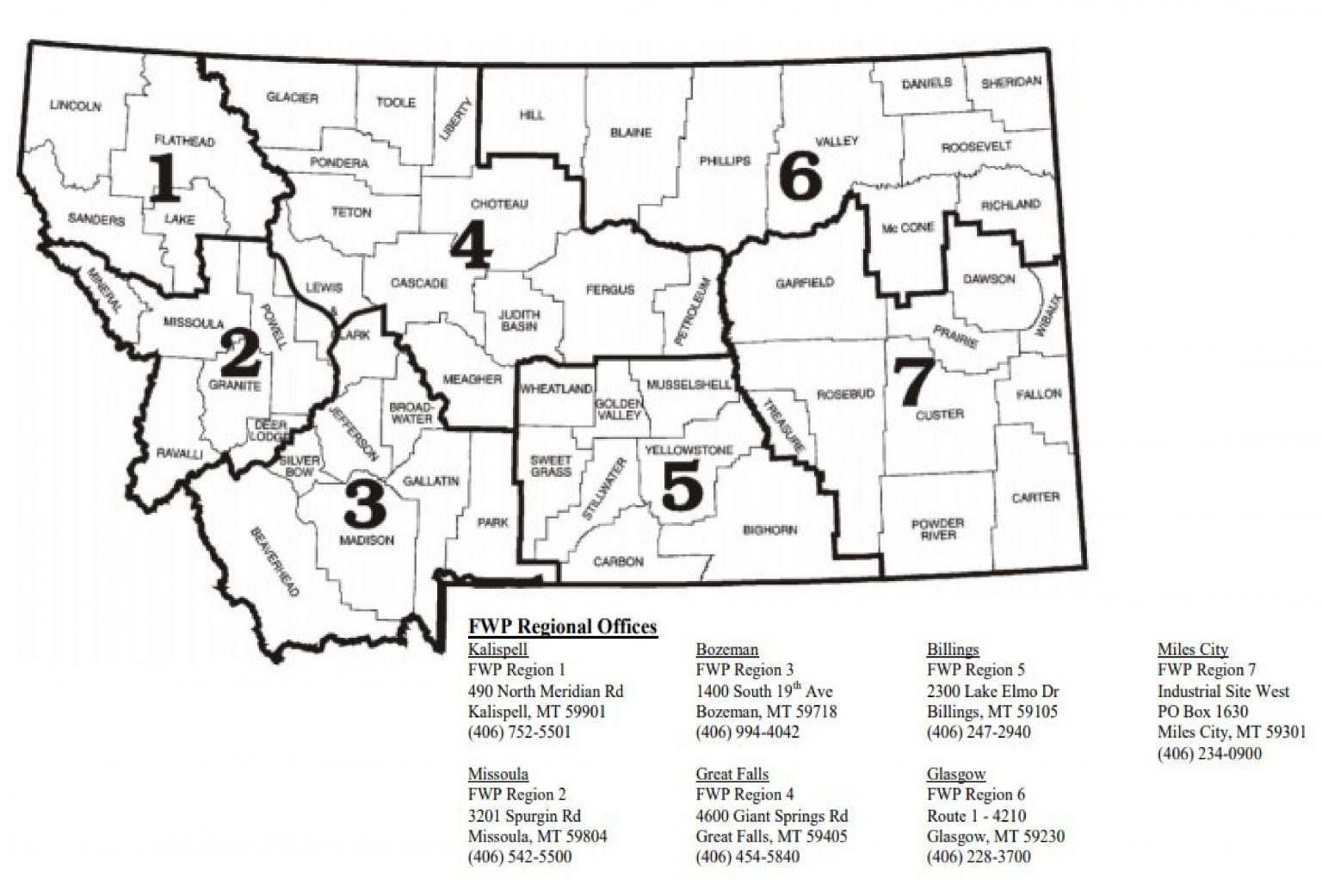
Review and download these important documents you may need to film on lands managed by FWP.
Guide for filming in Montana state parks
Parks: State and National
State Parks
There are 55 state parks in Montana. To film in these parks, determine which FWP region the park is in and contact the regional office for permitting. Or, click on the map to visit the MT State Parks website, where the map is interactive; you’ll be able to click on any state park to retrieve park info as well as the park manager.
FWP allows and encourages commercial filming when and where possible. However, it also requires that primary consideration be given to potential resource damage and to anticipated disruption of normal public use. A permit is required when productions are made up of two or more individual photographers, videographers, models, crew members or client representatives for any filming or photography intended for public viewing or commercial advertising. If a photographer or videographer operates their own equipment without the use of models, props, crew members or client representatives, no permit is needed.
A minimum of 10 working days' advance notice is required to process requests and to determine feasibility. Depending on the location, an environmental assessment may also be necessary. Permits are granted on a case-by-case basis. Initial contact should include the nature of the project, shooting dates and times, the type of equipment and the number of vehicles. For best results, notify the appropriate regional parks manager as soon as you think you may want to shoot in the area even if you do not have complete information. A fee, performance bond and liability insurance may be required. The amounts for each will be set by the department on a case-by-case basis.
View the map below for FWP regional offices contacts or the FWP jurisdictions database.
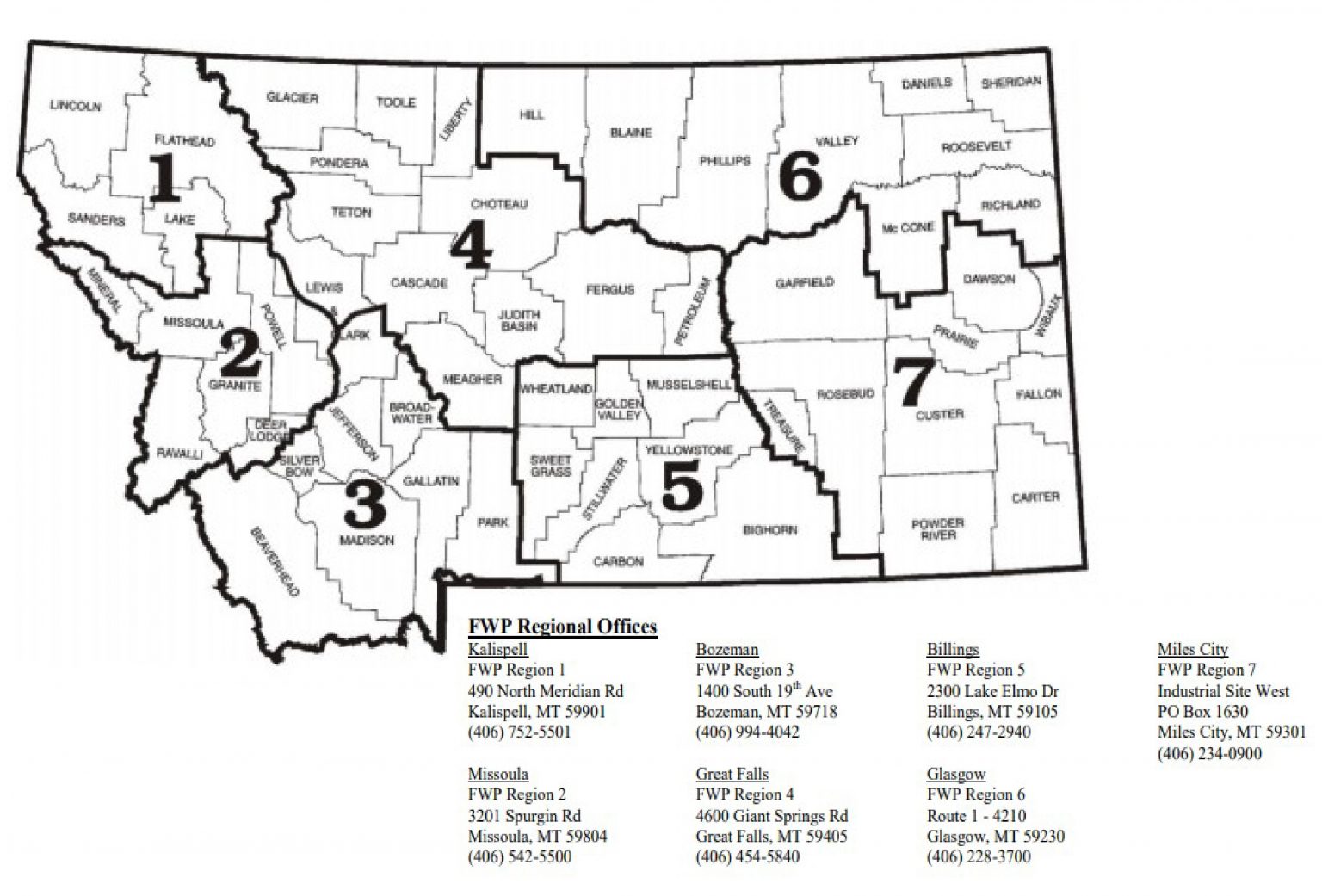
Review and download these important documents you may need to film on lands managed by FWP.
Guide for filming in Montana state parks
The National Park Service in Montana preserves some of the most treasured cultural resources in our state – including two National Parks: Glacier and Yellowstone.
Important
The time expectations to approve a film permit in Yellowstone or Glacier, as mentioned below, are a bare minimum. For large or complex filming projects, it could very well take six months from when you initiate your permit to actually receiving it. You should reach out to these parks months in advance if your project falls in these perimeters.
Glacier National Park
Glacier National Park, located in northwestern Montana, contains 1,013,000 acres of spectacular mountain scenery, geologic landscapes and unique wildlife. All commercial filming activities taking place within a unit of the national park system require a permit.
A full application packet including a detailed application, non-refundable $100 application fee and proof of general liability insurance must be received a minimum of 20 business days prior to requested permit dates. Please visit GNP’s film permitting page to read complete details. Also download GNP permit information and the GNP application for commercial filming for reference. Contact GNP directly with application questions at 406-888-7832.
GNP application for commercial filming
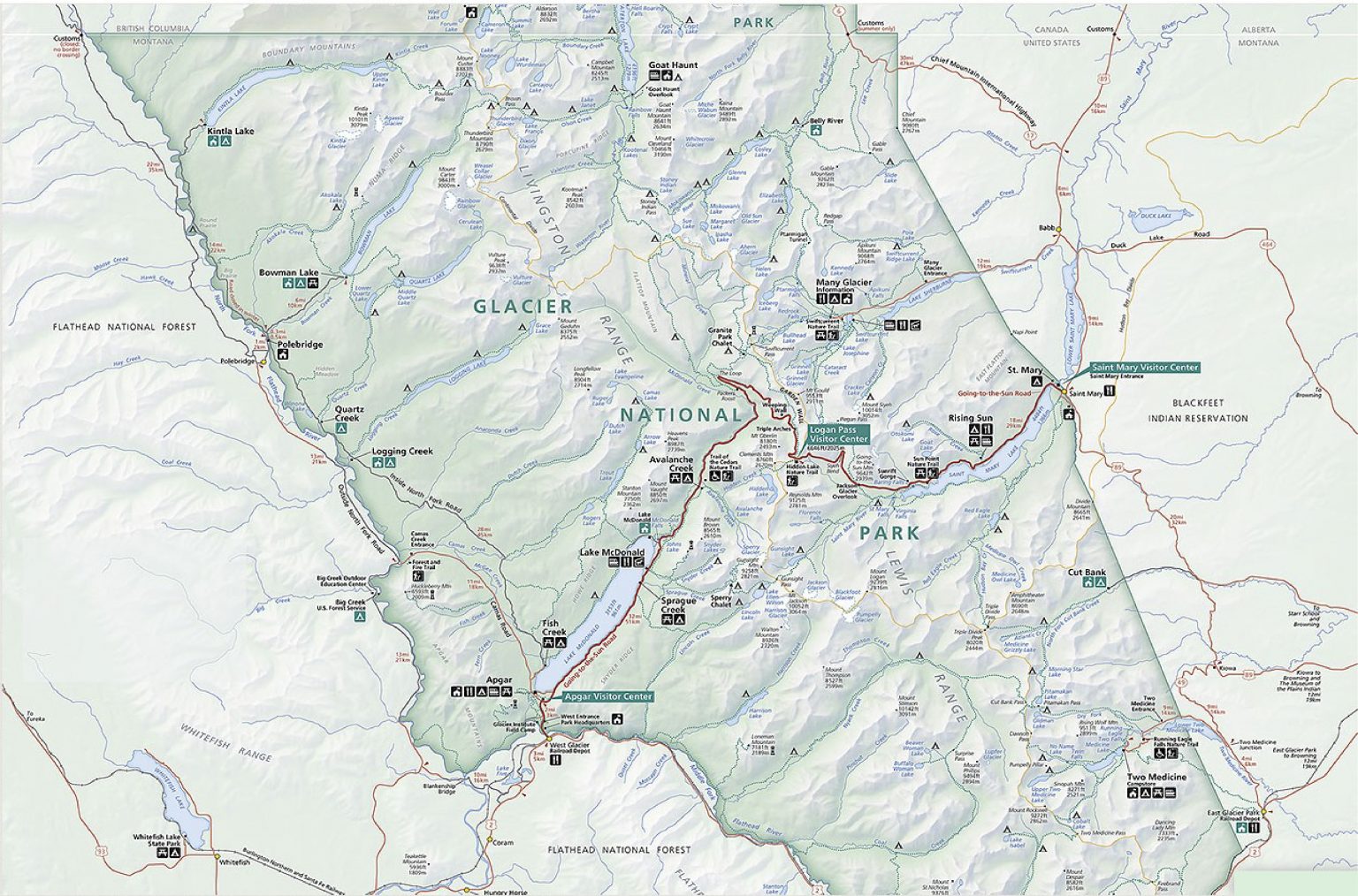
Yellowstone National Park
On March 1, 1872, Yellowstone became the first national park for all. The majority of the park is in the state of Wyoming, but it also stretches into Idaho and Montana. In fact, three of the five entrances into the park are in Montana.
All commercial filming activities taking place within a unit of the national park system require a permit. Drone use is strictly prohibited in YNP. Please visit YNP’s film permitting page for complete restrictions and all permitting requirements. Film permits are considered in the order they are received. All applications must be completed in detail and returned with the permit application and a non-refundable $300 application fee. A minimum of two to four weeks is required to process an application and issue a permit. You may download the YNP application for commercial filming below for reference. Contact the YNP directly with application questions at 307-344-2722 or email yell_film_permits@nps.gov.
YNP application for commercial filming
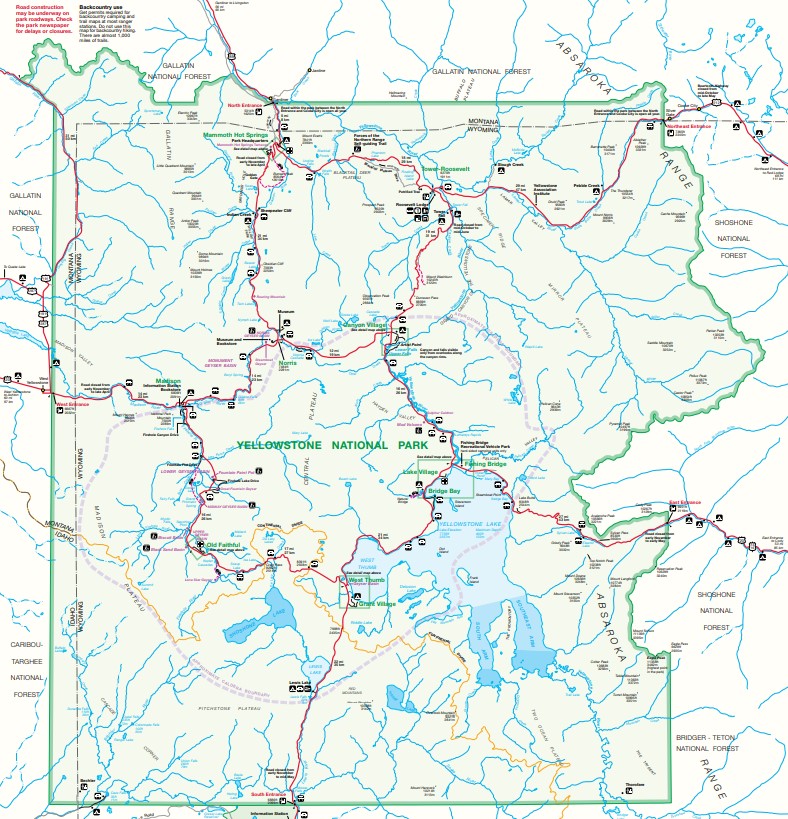
Recreation Areas and Trust Lands
The Montana/Dakotas BLM manages 8.3 million acres of diverse landscape that includes day-use sites, recreation areas, campgrounds and trails. To learn more about these areas, click the BLM Montana/Dakota website button below.
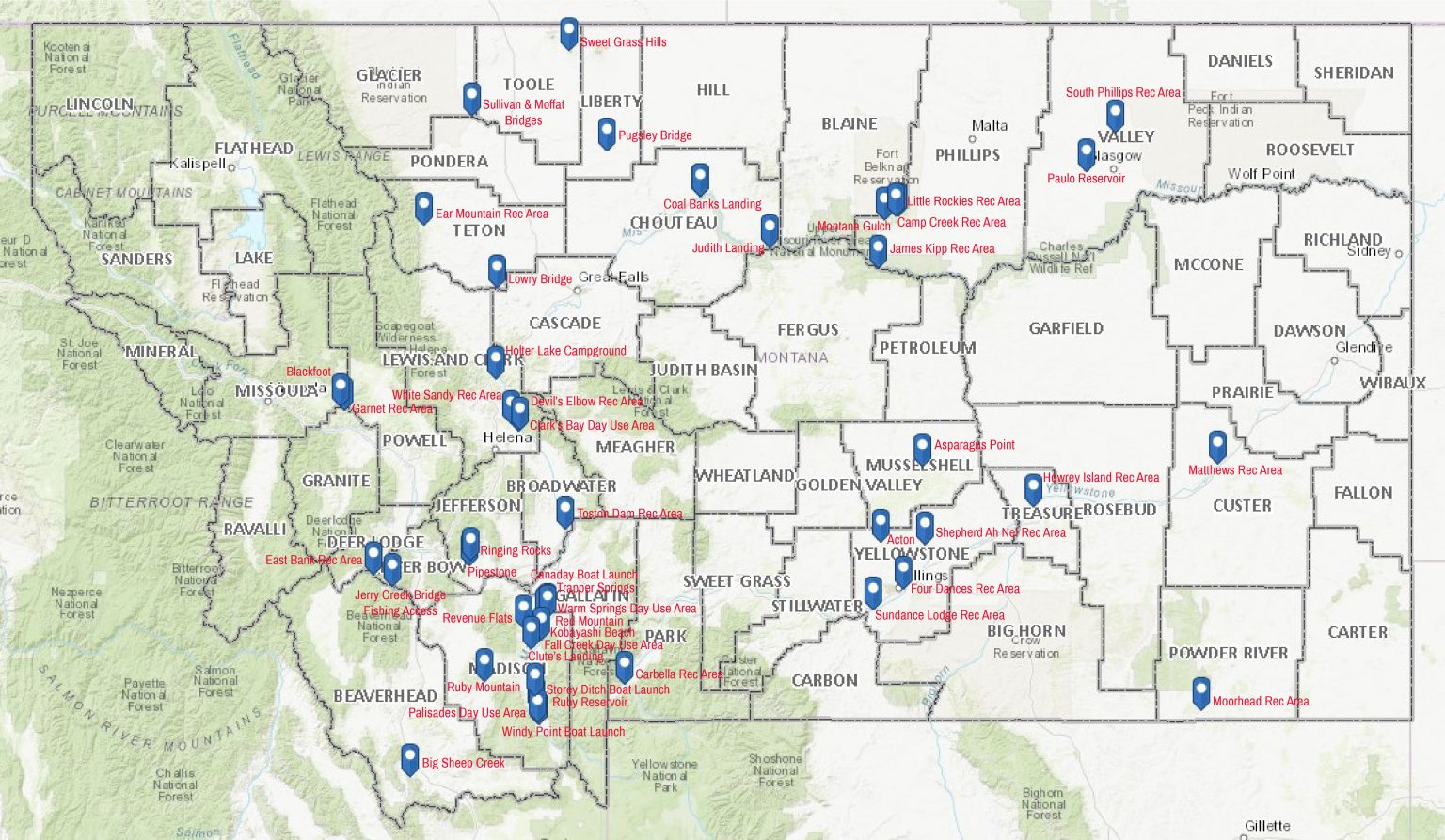
Commercial filming or still photography will not be permitted if it is determined that:
- There is likelihood of resource damage that cannot be mitigated.
- There would be an unreasonable disruption of the public’s use and enjoyment of the site, beyond short-term interruption.
- The activity poses health or safety risks to the public that cannot be mitigated.
Depending on location, time of production and type of production, the BLM may impose additional requirements such as bonding, reimbursement for overtime costs, etc. Note that large productions and requests to film outside popular locations usually require an onsite pre-application conference with BLM personnel. Although it may vary, the time to process is usually at least 30-60 days.
Each BLM regional office authorizes filming on public lands within their jurisdiction, and each location is unique and subject to different conditions. The permitting process and items needed vary depending on the proposed location and type of filming. Contact the BLM field office of the area you are interested in before applying. Visit our BLM jurisdictions database for contacts in these areas.
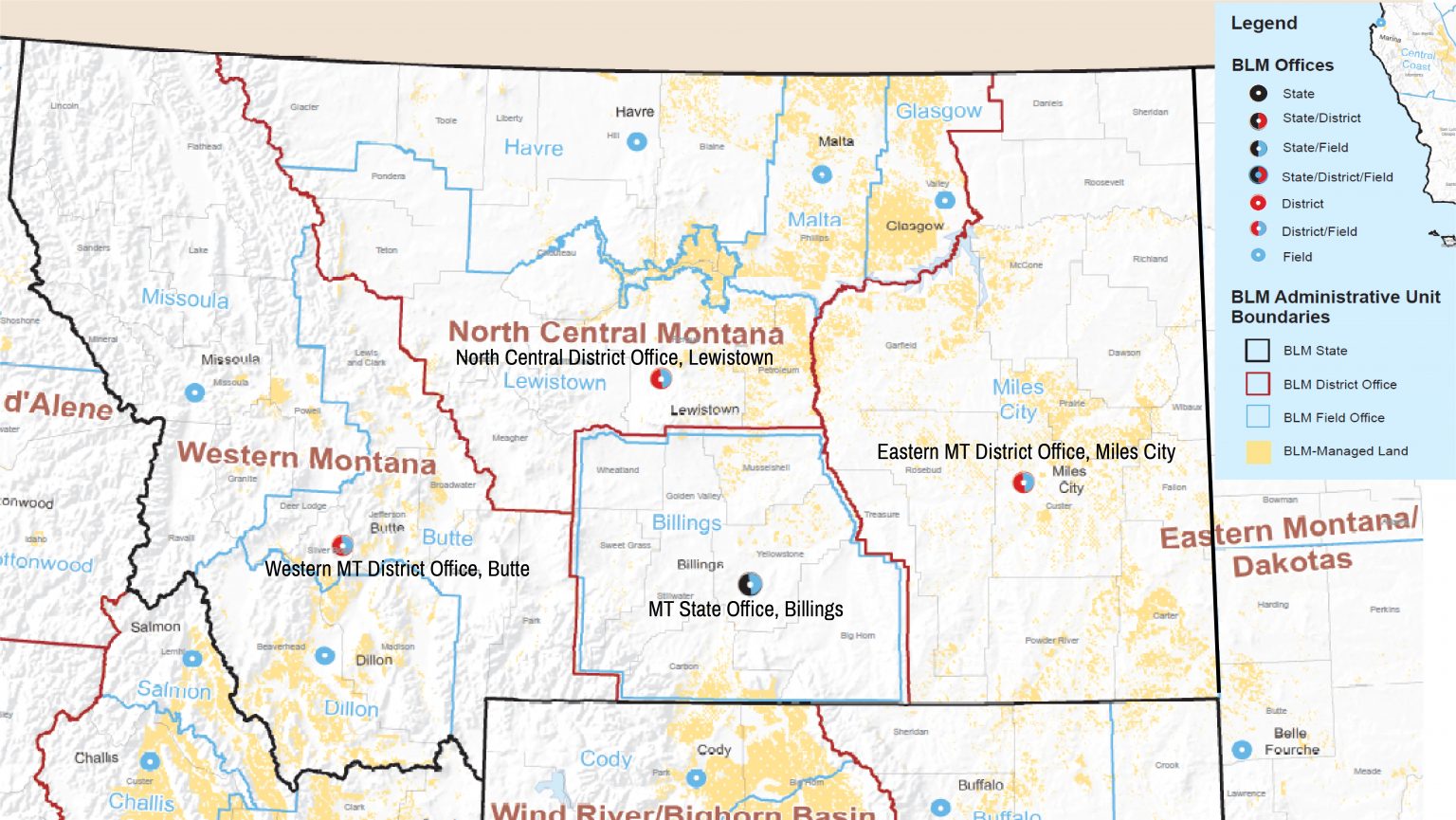
The permitting process and items needed vary depending on the proposed location and type of filming. Review and download these important documents pertaining to filming on BLM land.
The Bureau of Reclamation manages approximately 200,000 acres of land in Montana. Most of the lands are located adjacent to reclamation reservoirs and include six recreation sites. Find more detail on these areas below.
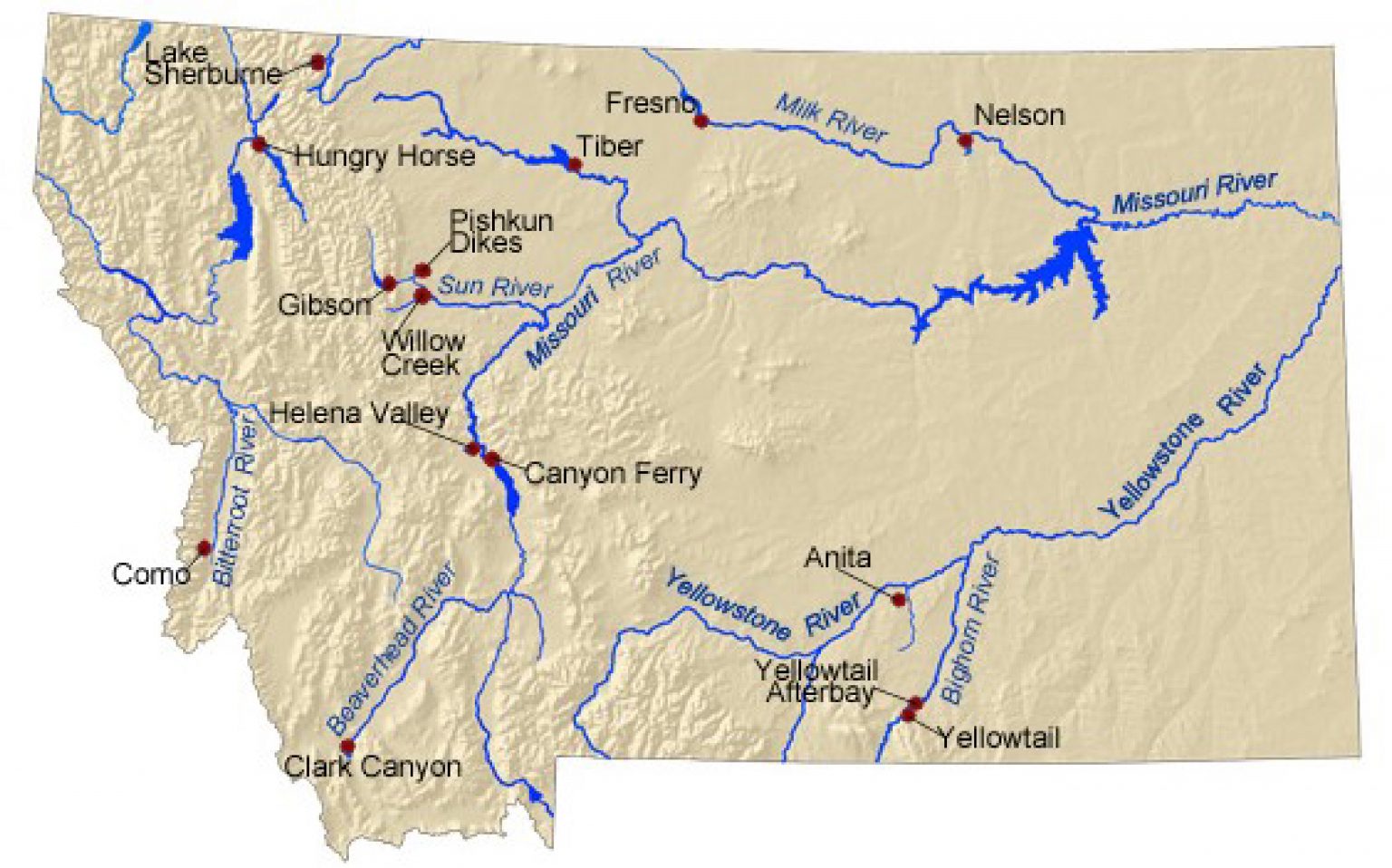
A permit is required for commercial filming on BOR lands or facilities. Commercial filming, whether performed by nonprofit organizations or private industry, include but are not limited to motion picture filming, videography, virtual reality recording and sound recording. For ground photography, a permit is required if the requested activity will take place at locations where or when members of the public are generally not allowed; involves product or service advertisement; or involves the use of models, sets or props.
Filming and photography are prohibited if there is a likelihood of resource damage, there would be an unreasonable disruption of the public’s use and enjoyment of the site or the activity poses health or safety risks to the public.
All film permit applications must be received a minimum of 15 business days prior to the shoot date, but it is recommended that you submit your application at least 30 business days in advance.
To view all commercial filming and photography rules, permitting and FAQs, click on the BOR filming and photography info and BOR application steps buttons. To view regional contact information, visit our BOR jurisdictions database.
The DNRC, Trust Land Management Division is responsible for managing 5.2 million acres of Montana State Lands: forest tracts, crop land, scenic badlands and urban tracts scattered throughout the state.
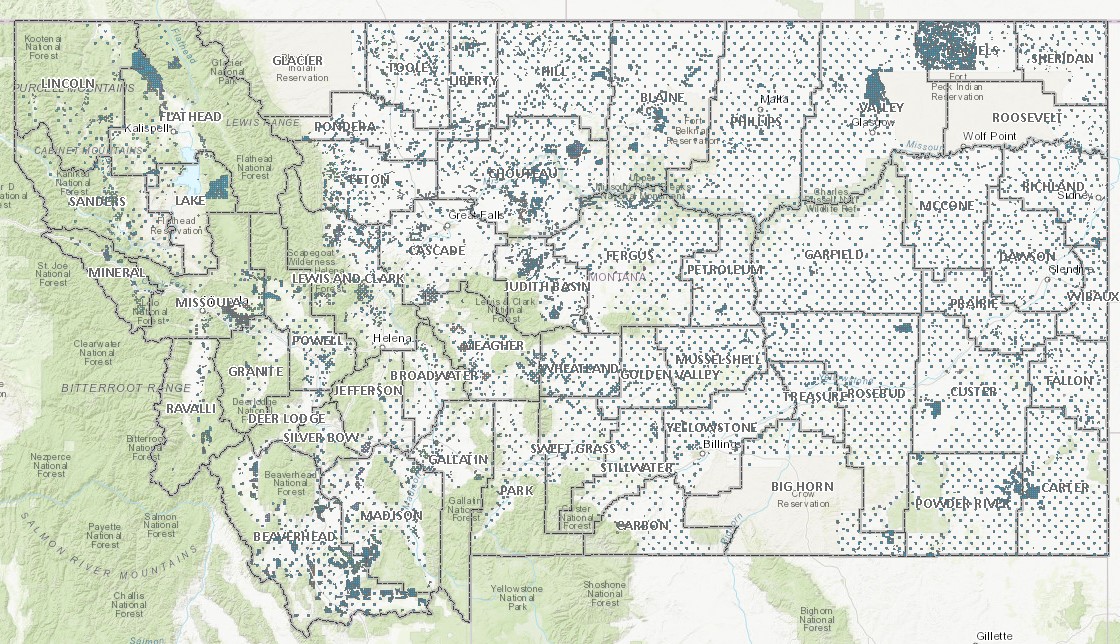
To access and view trust lands in more detail, click DNRC interactive webmap. Make sure to click on “Trust Lands” in the layer list.
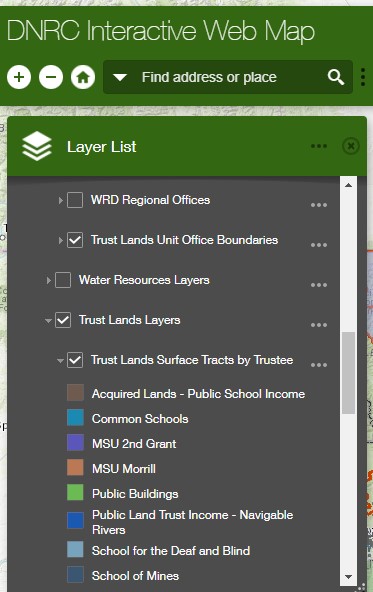
To inquire about filming on state trust lands:
- Contact the DNRC’s regional land office responsible for that area.
- Provide a legal description, e.g., township, range or section, of the land you are interested in, along with proposed dates and other details of your film project.
- A land use license, fee and bond may be required.
Visit our DNRC jurisdictions database for contact information in these areas.
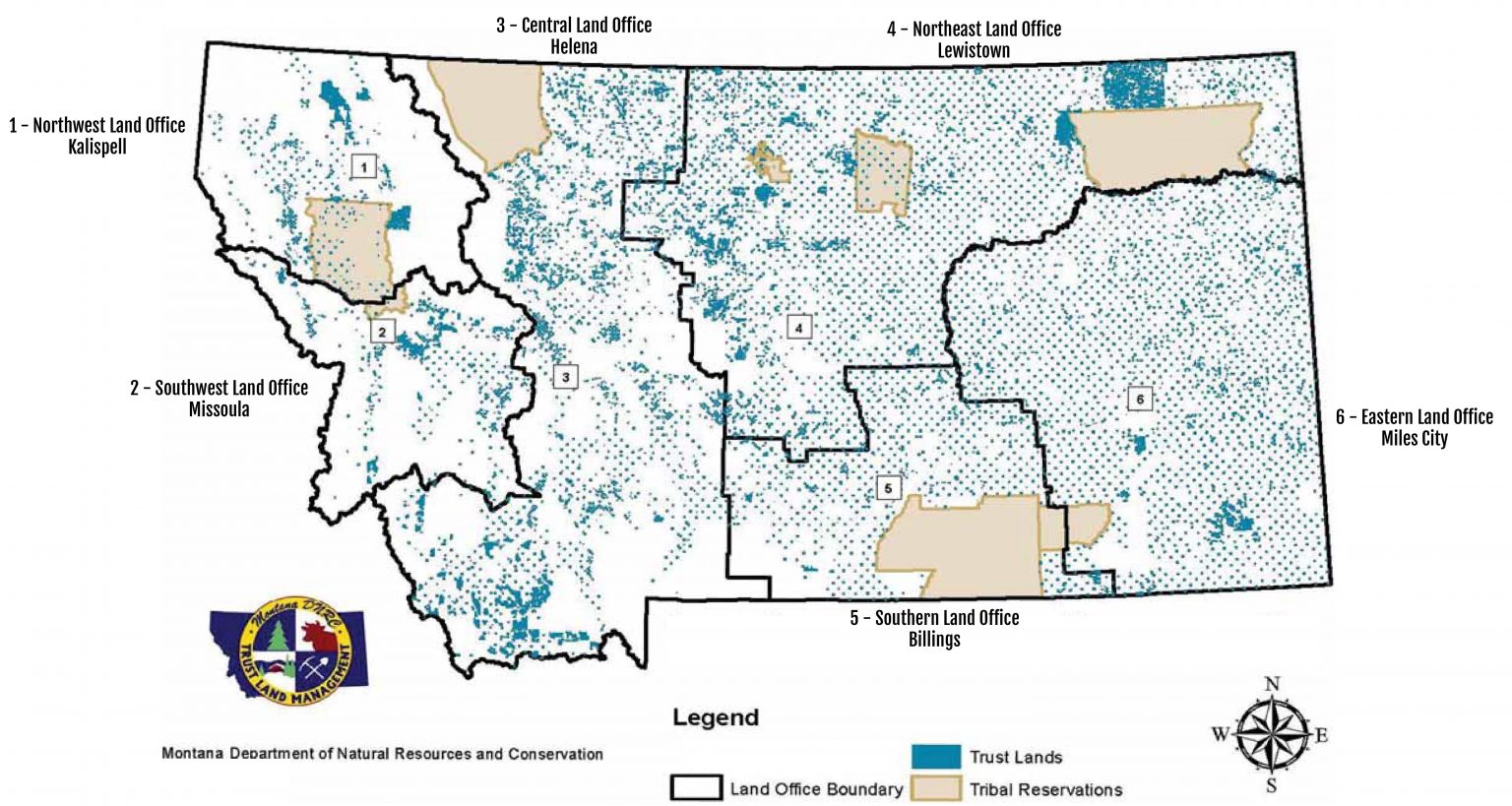
The U.S. Army Corps of Engineers manages the Fort Peck dam in Montana, which includes the Fort Peck Interpretive Center, campgrounds and 26 recreation areas around Fort Peck Lake. Find detailed information on these recreation areas, the USACE’s permitting process and Montana district offices below.
USACE-managed recreation areas
USACE Montana district offices
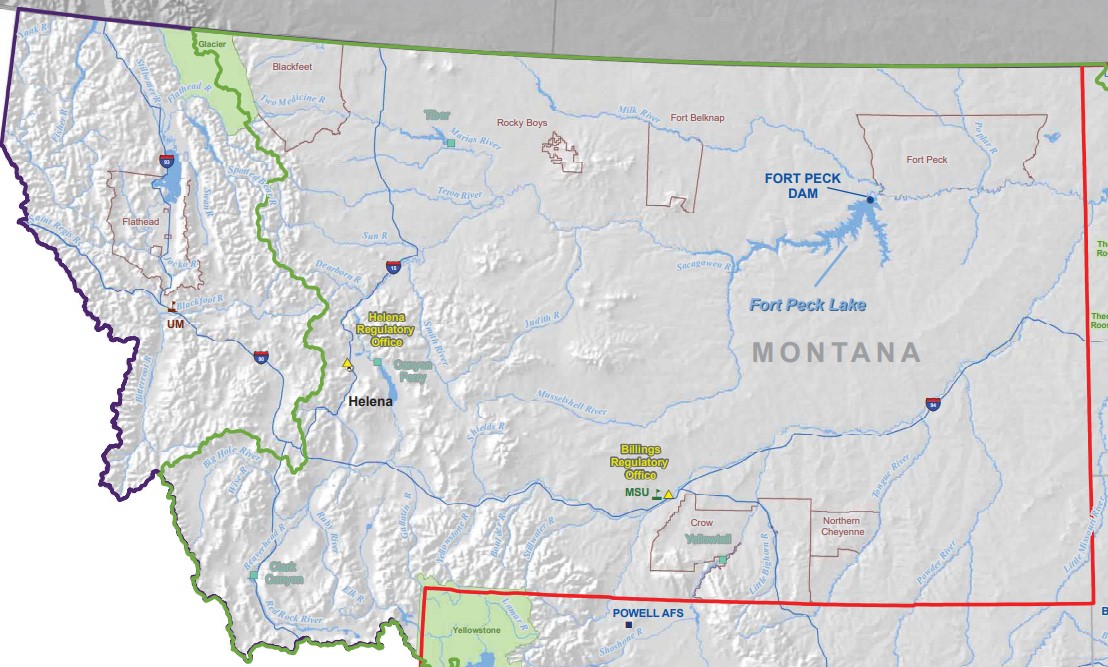
The USACE is tasked with ensuring that the physical, biological and chemical quality of our nation’s water is protected from irresponsible and unregulated discharges of dredged or fill material that could permanently alter or destroy these valuable resources. Individual permit requirements will be reviewed. By discussing all information prior to application submittal, your application will be processed more efficiently. An official determination as to the need for a Department of the Army permit will be provided upon request.
Montana Department of Commerce
301 S Park Ave, Helena, MT 59620
Contact Us | 406-841-2700
Montana Relay 711
If you experience difficulty accessing resources or content on this site, please contact us using the phone number or address above.
